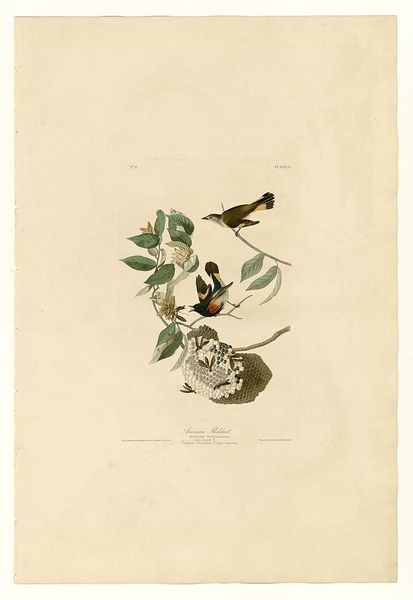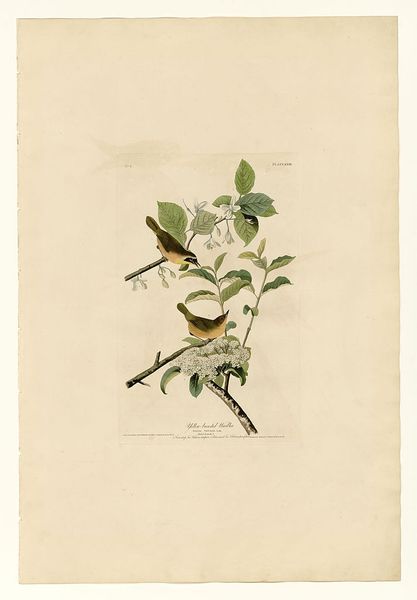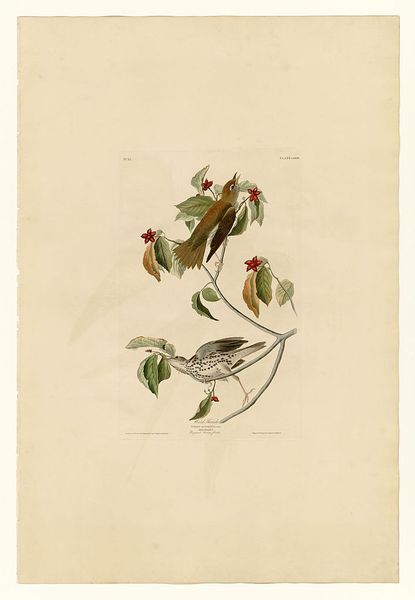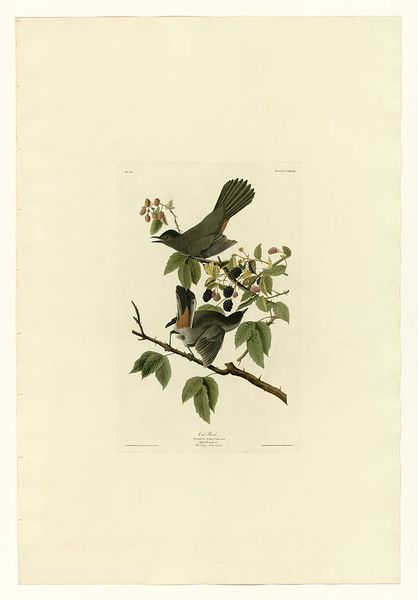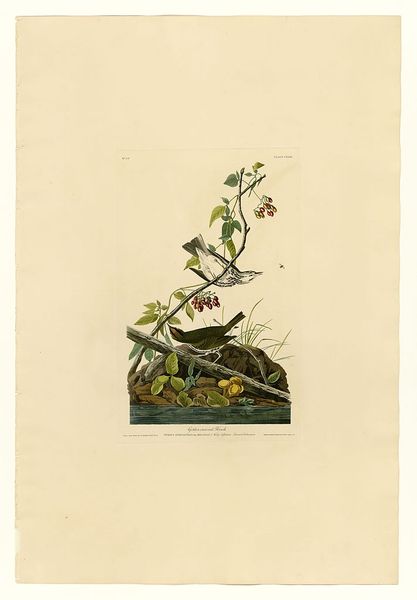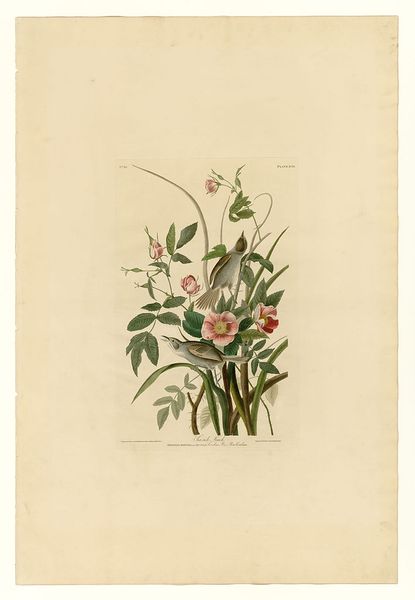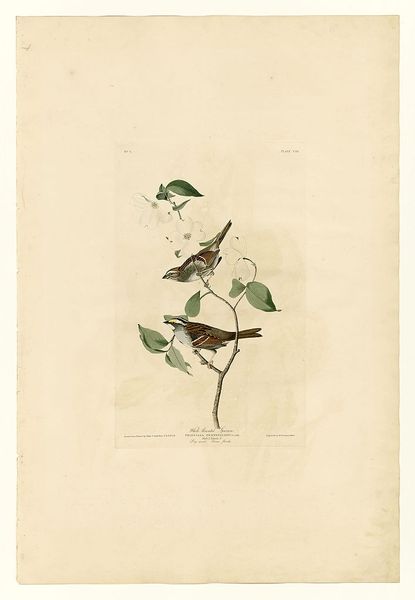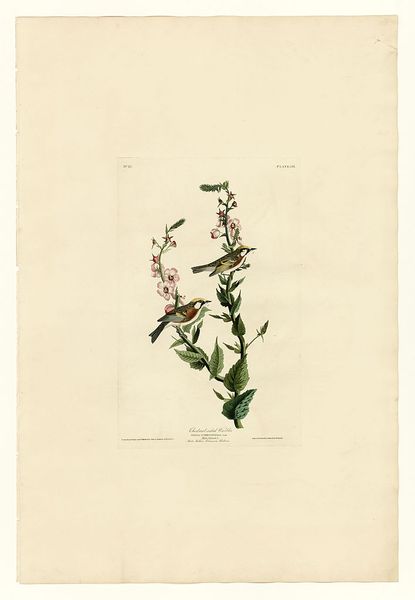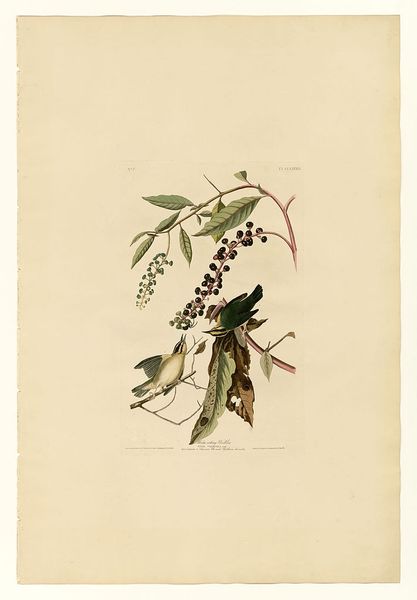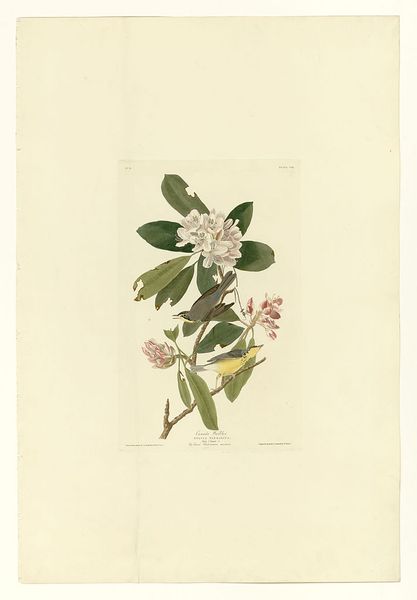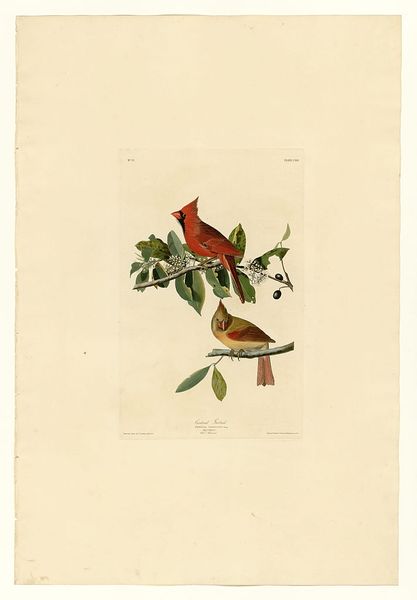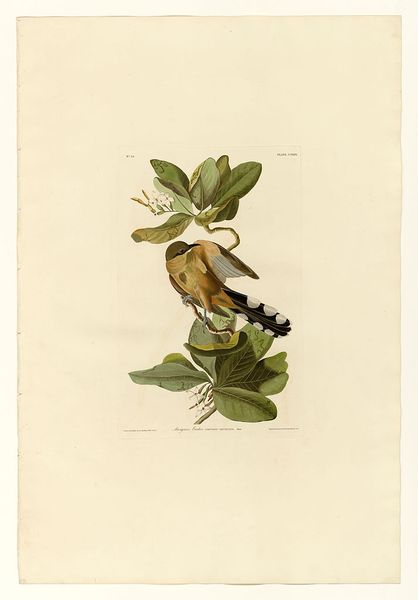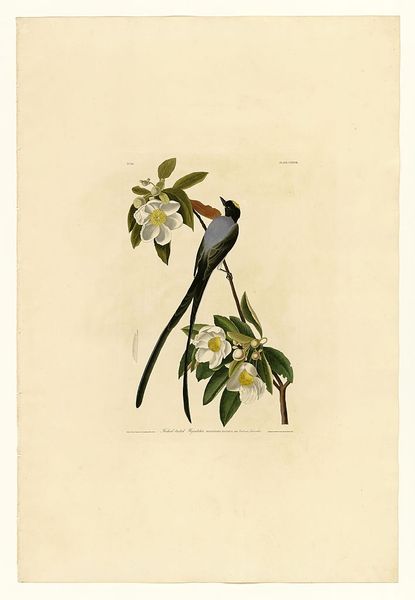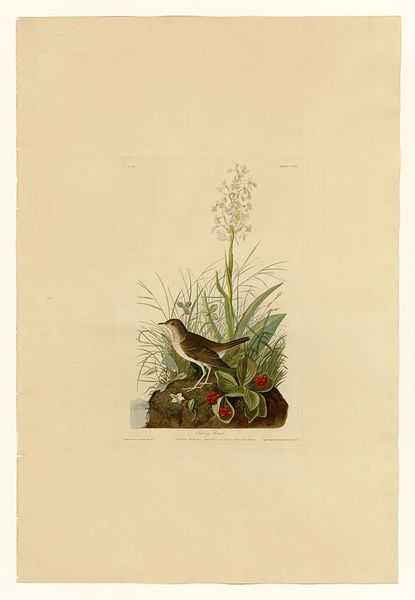
drawing, plein-air, watercolor
#
drawing
#
plein-air
#
landscape
#
watercolor
#
botanical drawing
#
naturalism
#
botanical art
#
realism
Copyright: Public domain
This is Plate 123, 'Black & Yellow Warblers' by John James Audubon. It’s made using a combination of watercolor, graphite, and possibly some pastel, all applied to paper. Consider how Audubon created this image. The thinness of the watercolor allows for a great deal of detail, crucial for capturing the nuances of the birds' plumage and the surrounding foliage. The graphite underdrawing would have provided a structural foundation, while pastel may have been used to add soft, subtle highlights, bringing the image to life. Audubon was working at a time when scientific illustration was crucial for understanding the natural world. He would have relied on printmaking to disseminate his works. This process demanded a level of skill, patience, and collaboration, involving not just the artist but also the engravers and printers who translated Audubon's vision into a reproducible format, a pre-photography means of mass production. The creation of prints like this was a labor-intensive process. The social and economic context of printmaking is an important part of Audubon’s work, and the images were intended for a specific market of educated and affluent consumers who were fascinated by the natural world and the burgeoning field of ornithology.
Comments
No comments
Be the first to comment and join the conversation on the ultimate creative platform.
